In Belgium generally, and in the province of Limburg, specifically, cycling is important for tourism, valued for its low carbon usage, and appreciated for its ability to provide access into some vulnerable areas while also providing protection from cars. All of these factors have been the impetus for the creation of a series of special cycling paths called "Cycling Synergy," which bring about unusual and immersive experiences within nature for cyclists and others using the paths.
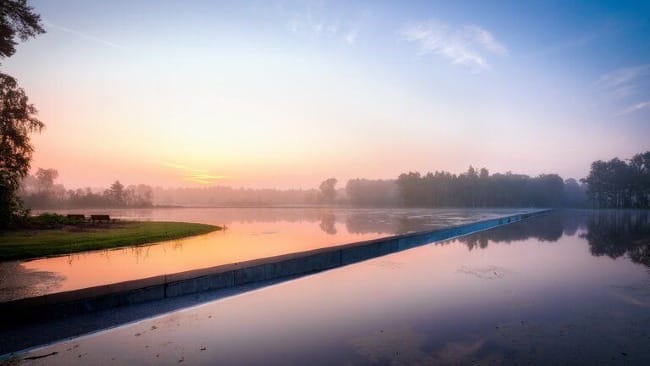
Cycling Through Water
The first of these, opened in 2016, is called "Cycling Through Water." It includes a 656-foot long, 10-foot-wide concrete path that travels through a pond in the De Wijers Nature Reserve at Bokrijk-Genk. The nature reserve, which contains more than 1200 ponds and provides important habitat for many creatures: fish, waterbirds, such as swans, and frogs.
The path, which is sunken into the water, provides a new perspective for those who use it as they are brought to eye level with the surface of the water and the creatures floating and diving upon it. Instead of looking down from a human height, those on the path are given a new, close-up view.
This is the gift of art—offering a fresh way of seeing something. The perspective offered in this work comes from being "in" the water rather than above it, giving an immediacy and immersive quality to the experience.
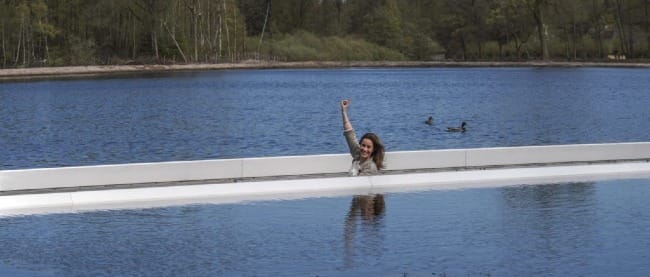
For the most part, the aim of this path project was less about adding more miles of bike paths and more about improving the experience of the ones that already existed, especially a network that had been built about 25 years earlier. Because it used an already-existing path, the negative effects on the environment were less. In fact, the project resulted in a healthier environment.
The "Cycling Through Water" path follows the course of a prior bicycle path between two ponds, atop a remnant of an old dike. The city of Limburg combined the new path work with large-scale restoration and conservation efforts in the area, specifically work on the dikes, which led to significantly improved water quality. Habitat for the resident amphibians increased as a result of the work, and their numbers, which had been declining, began to increase. With the cleaner water that resulted, some native vegetation that had disappeared also made a recovery. To allow movement from one section of water to the other, an amphibian crossing was created underneath the pathway, through the water.
The project has benefitted humans as well as amphibians, with at least 500,000 bikers and pedestrians enjoying the path and experiencing the unusual perspective it provides.
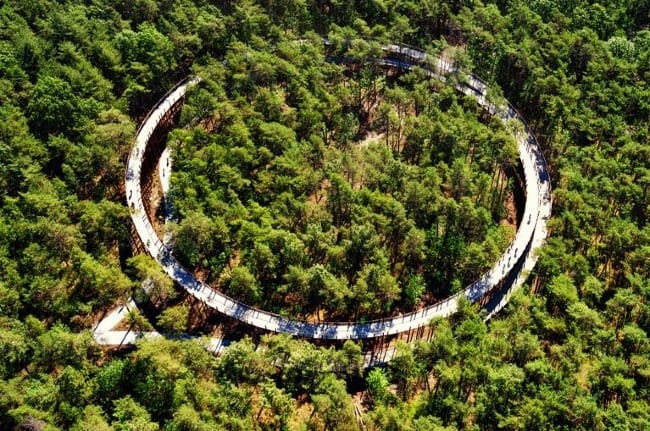
Cycling Through the Trees
The second bike path of the project opened in 2019 and is called "Cycling through the Trees." In the same way that "Cycling Through Water" offers a new perspective by its route through water, "Cycling Through the Trees" immerses people in the forest lands of Pijnven Nature Reserve in Bosland, about 18 miles away from the De Wijers Nature Reserve.
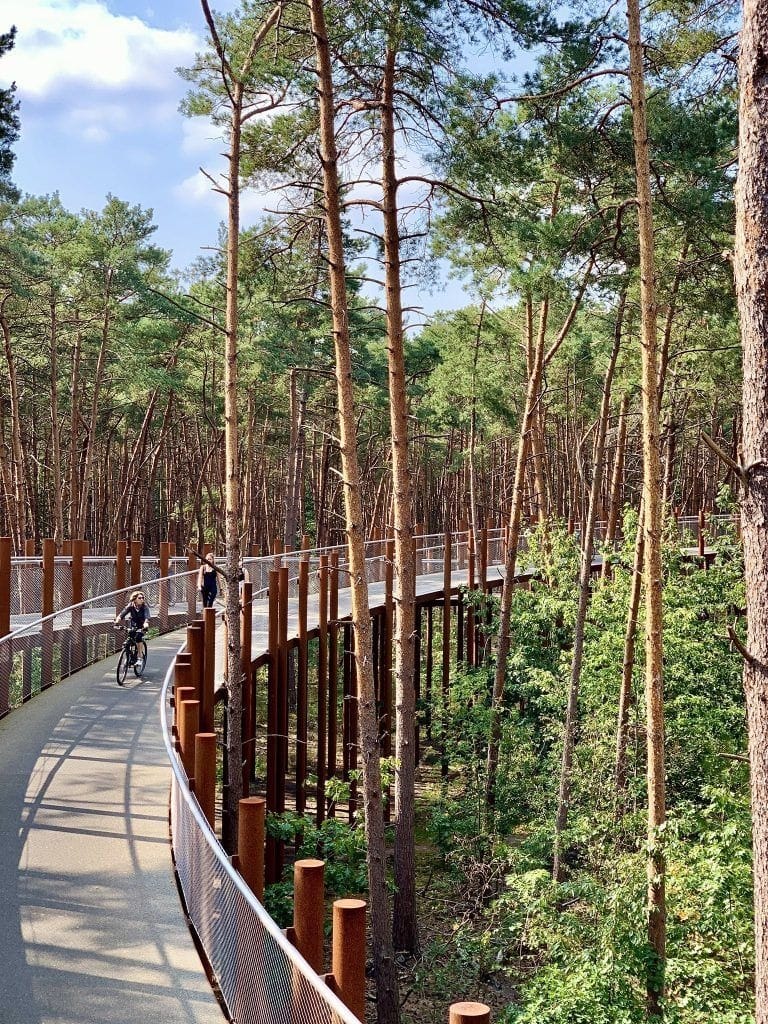
Where the Wijers path lowers people to water level, the tree path raises people through a gradual incline until they are at eye-level with the tall trees of the forest, giving them a perspective of a tree-dwelling creature, a view they wouldn't often get—unless they were to climb a tree.
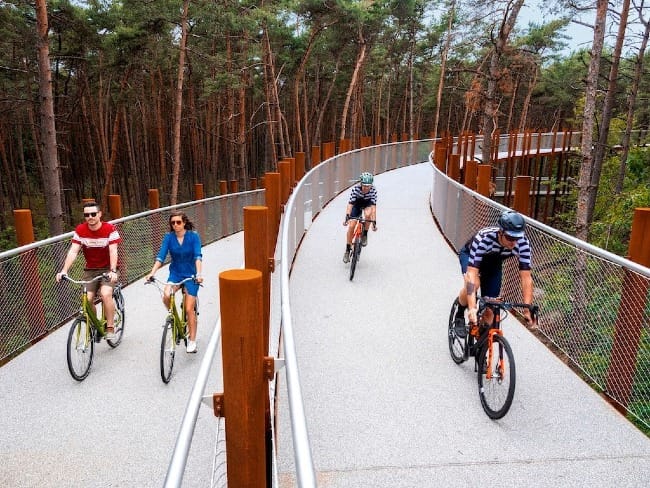
The most dramatic section of the path is 32 feet high and has a double circle that loops within the trees. The path is contained within the largest uninterrupted forest area in Flanders, the trees having been planted at the start of the last century to produce wood for the mining industry. When the mines closed, the trees continued to grow.
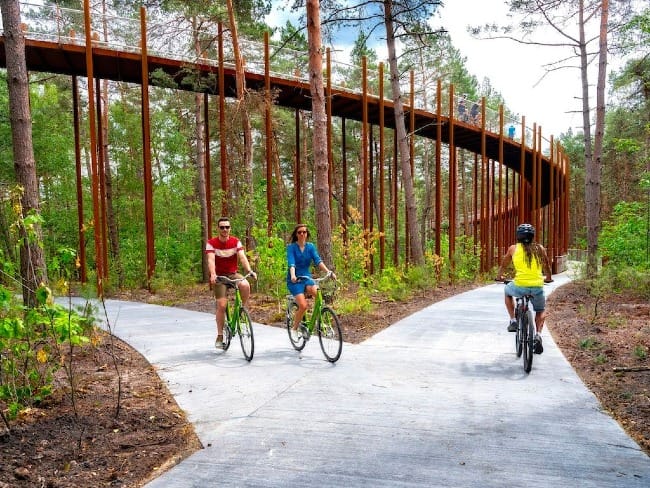
The forest is now being managed to give smaller, native trees more light and space on the forest floor so that a more diverse forest can grow up.
The ecological effect of the construction of the bike path was an important consideration. As few trees as possible were taken down, with those that were taken down used to make a resting spot on the path. Most of the construction was done offsite, with just the assembly needing to be done onsite, which meant less disturbance to the site. Just one crane was used in the construction so that less soil was compacted; concrete for the foundation was avoided by using a screw pile foundation.
The path blends aesthetically into the forest by the use of weathered, brown steel poles that hold up the bridge. The columns symbolize the trunks of the pine trees, in a way that integrates the structure visually into its environment.
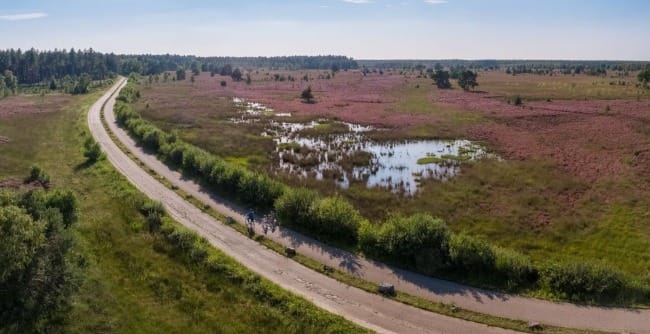
Cycling Through...Other Places
A third part of the Cycling Synergy project is called "Cycling through the Heathlands." Located in the heathland of the Hoge Kempen National Park, it opened in 2021. This pathway looks out on huge vistas of one of the largest areas of heathland in Flanders. In addition to sections that bring the cyclists and pedestrians right through the middle of the heathlands, the path also includes a 984-foot-long bridge that raises them above it, granting them the ability to see how the parts are connected within the large whole.
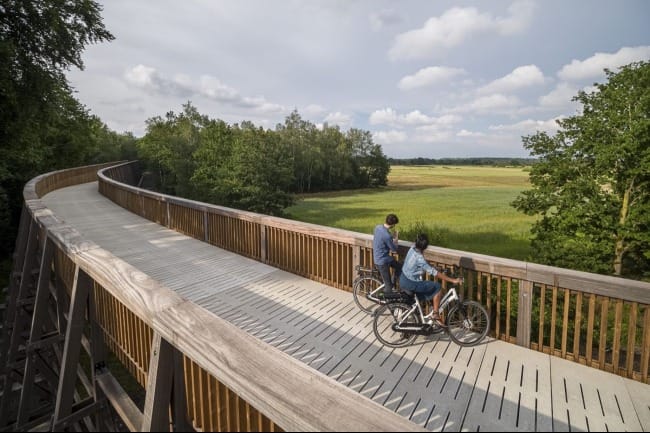
Because of the smooth snake that lives in the area, the bridge was built in a way so as not to create a barrier for the snake. This means that the foundations aren't one long beam, but are instead on individual footings so that the snakes can pass under the bridge easily. Also, grey concrete was used rather than black asphalt so that the surface heats up more slowly, making the snake less likely to use the path for sunbathing (which would make it vulnerable to being squashed by bicycle tires). The banks on the sides of the path are low enough so that they are not a barrier to the snake.
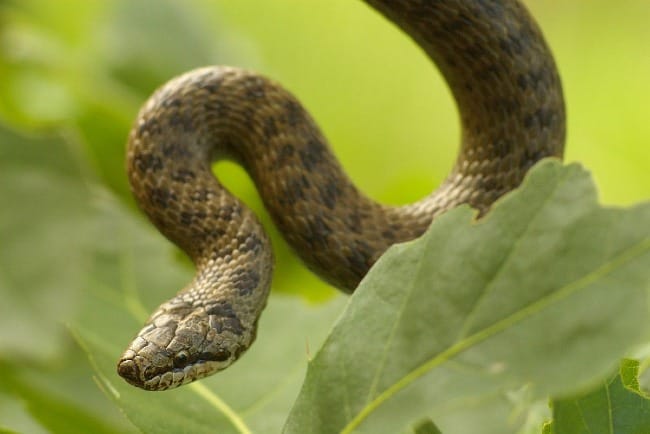
Another path, "Cycling Underground," is in the planning stages. It will take cyclists into the Marl Caves in Kanne, creating yet another opportunity to view a particular environment in an unusual and immersive way.
Is there a particular piece of art that has helped you see the created world in a new way? Have you ever gotten a glimpse of what the world might look like through another creature's eyes? Can you think of ways in which a change in your way of moving or being transported, (perhaps at a slower pace) has given you a fresh perspective on the world around you? Is there a favorite walking or cycling path near you?
Feel free to email me at info@circlewood.online or leave a comment below.
Louise
